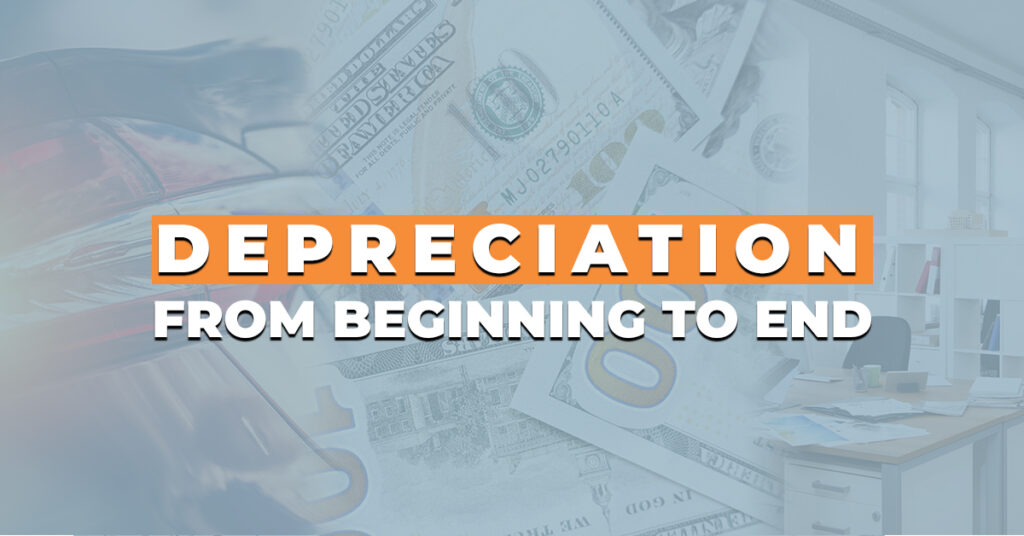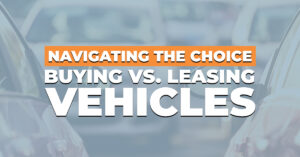
If you have assets in business or rentals, depreciation is an essential concept to understand. However, it can be confusing for those who aren’t tax experts because of all the vague language and IRS jargon. Understanding when depreciation starts, how it progresses, and when it ends can help improve your knowledge of this concept.
This article will take a closer look at depreciation from the moment you acquire an asset until you sell it (usually the main reason depreciation ends). We will include tips and examples, along with detailed explanations of exactly how depreciation works.
What Is Depreciation?
Depreciation refers to the estimated reduction in the value of a fixed asset over its lifetime or another defined period. Put simply, the moment you buy something and start using it, it begins losing value. A common example is vehicle depreciation. Although some people will try to inflate the numbers, a brand-new vehicle depreciates, on average, by about 10% as soon as it leaves the dealer’s lot.
The more you drive the vehicle, the more the value goes down over time due to nothing more than normal wear and tear. Many people will try to take care of their vehicles and drive them less to help them hold value longer. You can do the same with other assets, too. The exception, of course, is land. Structures on land can and should be depreciated, but land is not.
What’s important here is understanding that your assets will naturally lose value over time and with regular use. That’s depreciation.
When Does Depreciation Start?
Some people think that depreciation begins the moment you acquire an asset. That is partly true—depreciation starts when you put the asset into service (use). For example, if you buy a rental house and put it on the market, it starts depreciating as soon as it’s listed, not when it gets rented.
If you buy a business vehicle, depreciation starts when you complete the purchase and own it, not when you actually put it into service. If you purchase equipment for your farm in December but don’t put it into service until May, you still own the asset, and it’s in your possession, so it will begin depreciation. The rules are fairly clear, but if you have questions, you can ask your accountant or tax professional for more insight about different assets and what it means to be “put in service.”
The Middle: Vacant and Idle Assets
If you stop using an asset but still own it, you can’t stop claiming depreciation. You need to ensure that you continue to depreciate your assets even when they are vacant or idle. For example, if a rental property is between tenants, it’s still depreciating. If a business vehicle is parked for half the year, it’s still depreciating.
You need to depreciate all property used in business or held for income production. Moreover, that depreciation must continue even when assets are idle or not used temporarily. This is known as continuous depreciation, and it is important to your business.
When Depreciation Ends
The most common reason for depreciation to end is because you sell the asset. Once it is no longer your property, you cannot claim depreciation on it. That will be the responsibility of the new owner. Selling isn’t the only endpoint, though.
You may have a rental property with a fire resulting in a total loss. You stop claiming depreciation on that structure because it’s been destroyed. Once you rebuild, you can claim depreciation on the new property based on when it’s ready to inhabit.
Suppose you have a business vehicle that you’re claiming depreciation on, and that vehicle is in an accident. In that case, you should assume depreciation continues until the insurance company tells you it’s a total loss. Then, you can work on getting a new vehicle and restart the depreciation timeline.
Highlights and Insights
There’s a lot of information to consider regarding depreciation and keeping track of your assets. According to the IRS, “in service” refers to assets received by a business owner when they are received or available for use, even if they aren’t put into use right away.
That’s why it’s best to keep up with your assets and start using them as soon as possible. The longer you wait, the more value they’ve lost by the time you get started. Investopedia has a great explanation of depreciation that looks at the different calculation methods, how to depreciate certain assets, and how this differs from amortization and other accounting elements.
For example, depreciation refers to tangible assets, while amortization is typically used for intangible assets. Depreciation is also an expense on your accounting ledger. Make sure that you record it correctly so that you can keep your records accurate. More importantly, have a CPA or accounting firm that can handle all of this for you so you don’t have to think about it.
Final Thoughts
Depreciation is a bit complex, but it’s not difficult to understand once you break it down. How it works confuses some people, but you should have a much better understanding of how depreciation can help you keep accurate records of your assets over time.
Think about it—without depreciation, you’re basically saying that the business trucks you bought in 2020 are still worth the same amount in 2023, which isn’t true. They’ve been used for three years. Of course, their value has gone down. That needs to be included in your accounting to make your records accurate.
As mentioned, your best choice is to hire a reputable CPA to help you with all your assets and business finances. The Jones CPA Group has years of expertise and is ready to help you with any accounting or advisory services you need. Reach out today to learn more.






